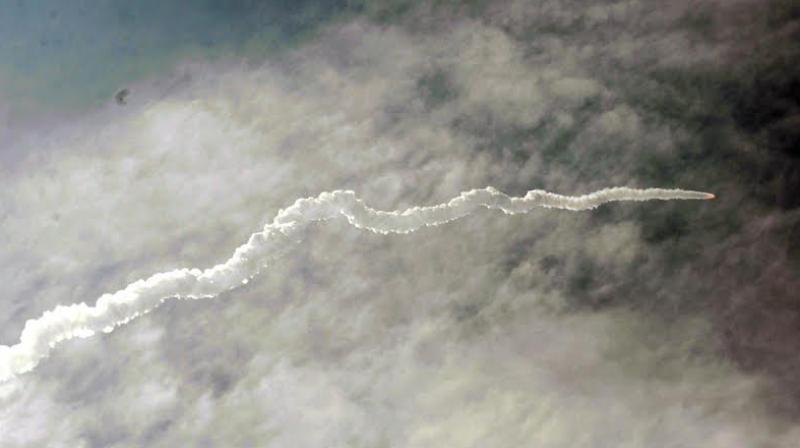ISRO's rocket lifts off with India's 6th 'eye in the sky', 30 nano satellites

Sriharikota: Leaving orange flames behind, ISRO’s workhorse Polar Satellite Launch Vehicle PSLV-C38 lifted off into the skies carrying India’s sixth ‘eye in the sky’ Cartosat-2 series – a dedicated satellite for the defence forces – along with 30 nano satellites from Satish Dhawan Space Centre in Sriharikota, Andhra Pradesh.
India's 'eye in the sky' is set to become sharper and wider with the launch of a third spacecraft in Cartosat-2 series. The previous satellite in the series had a resolution of 0.8 metres and the images it took on India's neighbourhood had helped New Delhi carry out surgical strikes on seven terror launch pads across the Line of Control last year, ISRO sources said.The latest remote sensing satellite has a resolution of 0.6 metres, which means it can spot even smaller objects.
This is the 40th flight of PSLV and 17th flight of PSLV in 'XL' configuration (with the use of solid strap-on motors). In this flight PSLV has injected the 712 kg Cartosat-2 series satellite for earth observation and 30 co-passenger satellites together weighing about 243 kg at lift-off into a 505 km polar Sun Synchronous Orbit (SSO) on Friday. The total weight of all these satellites carried on-board PSLV-C38 is about 955 kg.
The notable feature of Thursday's launch is that ISRO Scientists have geared up for the launch barely with in 18 days after a major successful launch of GSLV MK III with GSAT 19 on board on June 5. Mentioning this after successful launch of PSLV-C38/Cartosat 2 series Mission, Director of Virkam Sarabhai Space Centre, Dr K. Sivan said they have launched 3 missions within a span of 50 days stressing that it is record of sorts.
The co-passenger satellites comprise 29 Nano satellites from 14 countries namely, Austria, Belgium, Chile, Czech Republic, Finland, France, Germany, Italy, Japan, Latvia, Lithuania, Slovakia, United Kingdom, and United States of America as well as one Nano satellite from India.
Among others Nano Satellites, 10 belongs to USA, 3 United Kingdom, 3 to Belgium and 3 to Italy. One among them QB50-DE04 of Germany is meant for space debris removal demonstration. A Nano Satellite – NIUSAT developed by the students of Tamil Nadu based Noorul Islam University is also part of the 30 Nano Satellites.
This 15 kg three axis stablised satellite is built to provide multispectral imagery for agriculture crop monitoring and disaster management support applications. A dedicated Mission Control Centre with UHG/VHF antenna for Telemetry/Tele-command operations and S-Band for payload data reception has been established at the University.
The 29 International customer Nano satellites have been launched as part of the commercial arrangements between Antrix Corporation Limited (Antrix), a Government of India company under Department of Space (DOS) and the commercial arm of ISRO and the International customers.
The Cartosat-2 Series Satellite is the primary satellite being carried by PSLV-C38. This remote sensing satellite is similar in configuration to earlier satellites in the series with the objective of providing high-resolution scene specific spot imagery.
The imagery sent by the satellite will be useful for cartographic applications, urban and rural applications, coastal land use and regulation, utility management like road network monitoring, water distribution, creation of land use maps, change detection to bring out geographical and man made features and various other Land Information System (LIS) as well as Geographical Information System (GIS) applications.

